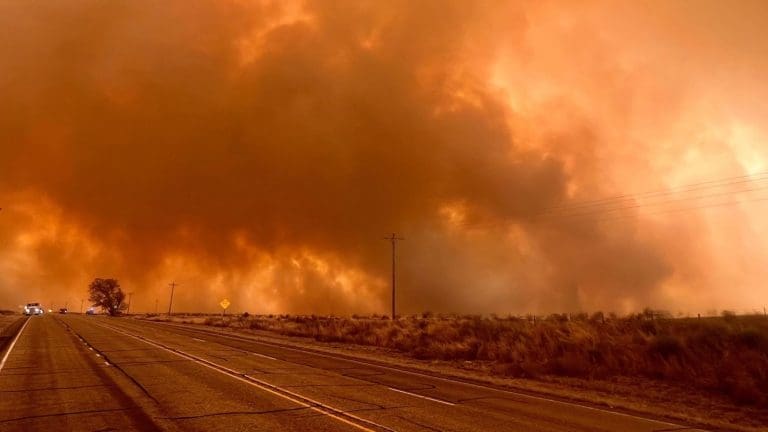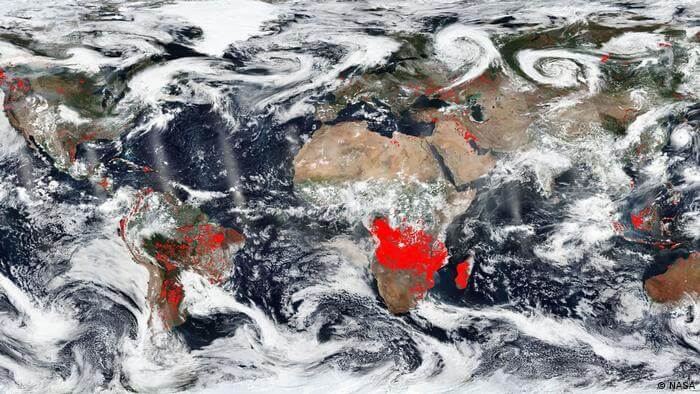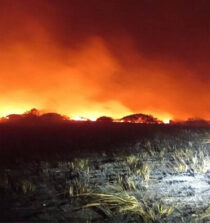By Oke Peter
There is no gainsaying the fact that African nations are lagging in the fight against climate change as the menace presents a stark reality and threat to the human race — nowhere is safe on the earth’s planet. The world is now warming faster than at any point in recorded history.
Interestingly, climate resilience has proven to be the most proactive preventive measure that can reduce the harmful effects of climate change. It is the ability to anticipate, prepare for, and respond to hazardous events related to the ecosystem. Though African nations may be the continent that pollutes the least, they suffer from the effects of global warming more than others.
Good enough, as many African nations are doing their best to mitigate the impacts of climate change, the use of resilience planning to develop strategies to minimize the risks associated with climate change will bring positive results in combating the menace.
Climate-related disasters in Africa
According to a report by Carbon Brief, Africa has registered nearly 1,700 weather, climate, and water-related disasters between 1970 and 2019, including events such as floods, storms, and droughts. South Africa recorded 90 hazards in the period, the highest number among African countries. At least 15,700 people have lost their lives to extreme weather disasters, while another 34 million people have been affected. A drought in South Africa in 1990 and Cyclone Idai, in Mozambique in 2019, were the most expensive climate disasters recorded in Africa between 1970 and 2019. Ethiopia, Kenya, and Somalia endured five consecutive failed rainy seasons from 2020 to 2022 in the Horn of Africa’s worst drought in decades. The drought famine in Somalia left more than 23 million people across the region facing severe hunger while the deadliest storm to hit Africa in the last two decades, was Cyclone Freddy which ripped through Malawi, Mozambique, and Madagascar in late February 2023 and then circled back in March. Raging for more than a month, destruction and flooding caused by the cyclone killed over 1,000 people and displaced hundreds of thousands of residents.

Furthermore, in a report published by the United Nations, West and Central Africa experienced one of the worst flooding disasters on record in 2022. More than 1,500 people were killed and 3.2 million residents were displaced across 20 countries. Sadly, most of the deaths happened in Nigeria. The heavy rains and floods also destroyed crops across 1.6 million hectares (3.95 million acres) of farmland. Nigeria, Chad, and the Democratic Republic of Congo were among the countries hardest hit. Similarly, in July 2023 soaring heat sparked huge wildfires across North Africa. Residents watched helplessly as the wildfires destroyed their homes and livelihoods. Morocco, Algeria, Fenaia, Bejaia, Zbarbar, and Bouira were all affected and many people lost their lives in the incident. Sadly, the summer heat wave that made Mali and Senegal experience scorching temperatures of above 84°F (above 40°C), was deadly. To curtail this, Mali had to set up cooling centers in the capital Bamako, and Senegal has ramped up investments in renewable energy sources.
Climate resilience plan
Environmentalists have made it known that the African continent cannot be silent while watching and continuing to suffer from the climate change impact without taking a step to stop various man-made and natural calamities. Exploring climate resilience plans will provide information on design strategies, policies, incentives, and investments in infrastructure. The continent must scale up adaptation and responses to reduce the vulnerability of all farmers and other food producers to the impacts of climate change as well as maximize the environmental benefits — while containing and reducing harmful impacts associated with agriculture and food systems by conserving, protecting, and restoring land and natural ecosystems, enhancing soil health, and biodiversity, and shifting from higher greenhouse gas-emitting practices to more sustainable production and consumption approaches.
Furthermore, she needs to accelerate the development of technology that will resolve the climate change problem. Also, effective resilience planning lowers the societal impacts of climate change. African nations can recognize all assets that could be impacted both directly and indirectly for each scenario. Direct impacts include property damages, displacement costs, and loss of business revenue. Indirect impacts include job losses, increased insurance rates, and reduced home value. For instance, heat can be managed in a city by planting trees across major cities will help protect the environment from windstorms, harsh weather, and heat. The continent must promote renewable energy and the adoption of energy-efficient technologies. She must sensitize citizens to the dangers of building on water channels. For instance, the sand filling and reclamation of the waterfront for buildings currently going on in Lagos, Nigeria will do more harm to the efforts being made towards the protection of the environment from the climate disaster. Also, provision of a functional waste disposal system should be made available within cities to discourage the throwing of dirt in the drainage, as this will heighten the impact of floods during the rainy season. The continent should encourage the use of electric vehicles as a means of transportation, this will save the environment from smoke and emissions. We should reduce, reuse, repair, and recycle our waste items and stop the use of pesticides for farming. Industrial agriculture contributes 25% of global greenhouse gas emissions, these greenhouse gases are negatively affecting humans, and biodiversity, plant and animal life.

Moreover, climate education must be included in the school curriculums, news platforms, social media spaces, and worship centers among others. Likewise, there should be a legal framework that will discourage manufacturers of cement, iron, steel, electronics, plastics, clothes, and other goods that produce emissions, mostly from burning fossil fuels to make production and in the process release gases.
COP 28 Resolution
The United Nations Framework Convention on Climate Change (UNFCCC) has been at the forefront of advocacy to reduce the overall climate impact through communication and promotion of sustainable and responsible consumption as well as to prevent dangerous anthropogenic (human-induced) interference with the climate system.” The Convention has near universal membership (198 Parties) and is the parent treaty of the 2015 Paris Agreement. However, the recent UN’s annual climate summit (COP28) concluded with a mixed bag of results for Africa. Wins were decisions related to loss and damage, climate finance, adaptation, food, and energy — issues that directly relate to African countries’ ability to meet their climate change and development goals. During the summit that was held in Dubai last year, a record of more than $85 billion was mobilized demonstrating the world’s commitment toward limiting global temperature rise by 1.5 degrees C (2.7 degrees F) which would avoid some of the most harmful consequences of climate change. February 2024 has been declared the hottest month ever recorded globally.
Consequently, only 26 out of 54 African countries signed the Conference of Parties 28, they included Angola, Republic of Benin, Burundi, Cape Verde, Chad, Comoros, Cote d’Ivoire, Egypt, Ethiopia, Gambia, Ghana, Guinea Bissau, Lesotho, Morocco, Mozambique, Nigeria, Rwanda, Senegal, Seychelles, Sierra Leone, Somalia, Sudan, Tanzania, Uganda, Zambia and Zimbabwe. This leaves African countries that are most vulnerable to climate change at unprecedented risk. Without fair and equitable access to finance, the African continent will not act effectively. Africa will require between $290 billion and $440 billion between 2020 and 2030 to finance loss and damage needs, which points to the huge gap between what’s been promised and the reality on the ground. The COP28 declaration on renewables and energy efficiency presents an opportunity for energy access and transition for Africa. The continent holds about 30% of the world’s critical mineral resources alongside abundant clean energy resources — wind and solar — that can serve as the foundation for clean industries and commodities.
What the experts say
According to the Chief Executive Officer and founder of Renewables in Africa (RIA), Tony Tiyou in a recent interview, he said: “Africa is the minor contributor to climate change, while being the most affected by it. Nevertheless, we know climate change is a global issue, so everybody needs to put in their share of the work, regardless of how much they have been part of the problem. So when we look at Africa, most of it is about adapting solutions so that we can move into an energy transition.
Sharing her views on the African energy transition, the Chief Exercise Officer of Munyax Eco Rwanda, Francine Munyaneza disclosed that African nations need to promote homemade solutions to fight climate change and be energy-sufficient. According to Francine, “I noticed energy access challenges heighten the impacts of climate change, to tackle this menace, we must explore qualification of our human resources, we need to invest in research and the development for renewable energies on the continent. African governments need to set their strategic framework that promotes renewable energies. This should have a clear mechanism and regulations that support renewable energy operators and reinforce their follow-up. We need to promote homemade solutions to combat climate change; I mean African solutions.
Similarly, research conducted by the global technology group Wärtsilä, entitled “Nigeria Leading Africa to Net Zero”, provides a detailed and realistic roadmap showing how Nigeria should proceed to build a 100% renewable energy power system by 2060 that will enhance its climate resilience. The report says that Nigeria can reach 100% renewable energy by 2060 and cut energy costs by 74% in the process. “As Nigeria seeks to take the lead in climate action whilst meeting the nation’s growing energy needs and secure universal access to electricity for its population, the need to build a data-driven and cost-effective energy strategy becomes crucial. Using advanced energy system modeling techniques. “The report stressed further that the optimal power system will consist of 1,200 GW of renewable energy capacity and require a total of 283 GW of energy storage and 34 GW of engine-based power plants for grid balancing purposes. The research shows that investing in renewable energy and flexibility from gas engines and energy storage is the best way to reduce energy costs, increase energy access, and improve grid reliability. With this strategy, the cost of electricity generation is predicted to drop by 74% by 2060 compared to 2022 levels, and carbon emissions will drop to zero. However, delivering on this ambitious plan will require enormous investments, estimated at $18.7 billion until 2030 and $425 billion until 2060. “Attracting that level of investment is possible, but not without significant policy reforms,” said Wale Yusuff, Managing Director, Wärtsilä Marine & Power Services Nigeria.

Interventions
Investigation has shown that The World Bank Group is the world’s largest financier of climate action in developing countries delivering a record $38.6 billion in climate finance in FY23 —which covers July 1, 2022, to June 30, 2023— supporting efforts to end poverty on a livable planet. The latest discovery has shown that Earth’s temperature has risen by an average of 0.11° Fahrenheit (0.06° Celsius) per decade since 1850, or about 2° F in total. The rate of warming since 1982 is more than three times as fast: 0.36° F (0.20° C) per decade. The Group’s Climate Change Knowledge Portal (CCKP) is dedicated to providing global data on historical and future climate, vulnerabilities, and impacts. The World Bank reports that Botswana, Kenya, Nigeria, Namibia, and Zambia are hit hardest by global warming. While Chad, Central Africa Republic, Eritrea, Guinea Bissau, Democratic Republic of Congo, Niger, Sudan, Liberia, and Somalia are among the top ten world’s most vulnerable countries. Many African nations have endured natural hazards, including droughts, epidemic diseases, floods, and storms over the past century.
Tackling barriers to climate resilience
However, efforts must be made to tackle blockades that affect climate resilience in Africa — these include political interests, change of administrations, lack of sustainable implementation of infrastructure of projects, and lack of trust by investors. Also, governments at all levels must execute identified climate-related projects with clear-cut agendas toward making Africa disaster disaster-free region. African nations often have limited funds to spend on climate-related issues, and the funds that they do have are prioritized for more pressing issues.
As African nations increasingly face a complex set of challenges that require multi-sector, layered initiatives that support their efforts to reshape their environments, all hands must be on deck to collaborate and synergize on the approaches that can make the world a safe place.








